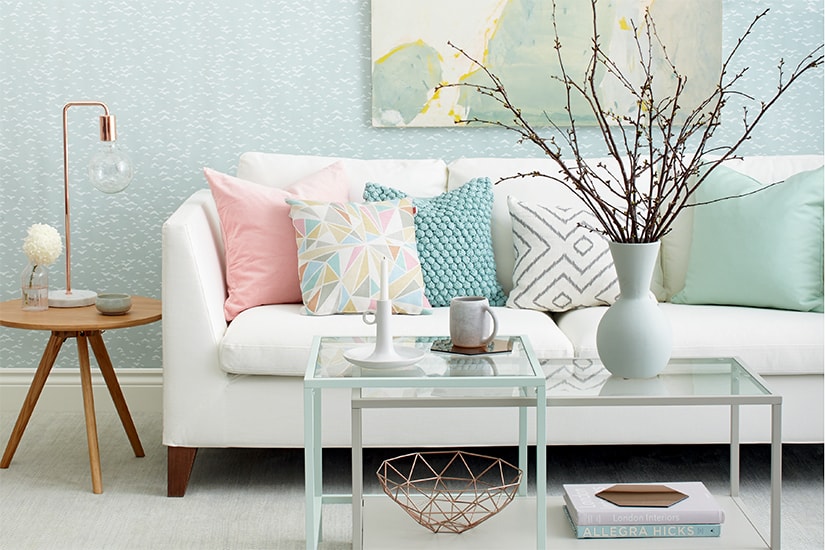Design Experts
Inside design: Louise Lipman

Design Experts
Inside design: Louise Lipman
Louise Lipman lives and breathes art – literally. Raised by a mother who both sculpted and painted, the Toronto gallery owner was seduced by the smell of paint early on. Her own penchant, though, was for publishing, and in the early 1980s she produced three pivotal books, profiling such iconic Canadian artists as Alex Colville, Christopher Pratt, Mary Pratt, Greg Curnoe and Jean Paul Lemieux. She also has a poster business, and today, through her gallery, Louise Lipman Contemporary Art, she's attempting to make art accessible to the masses. We asked her to act as our guide through the world of art collecting.  Style at Home: What, if any, forces are currently shaping the art world?
Style at Home: What, if any, forces are currently shaping the art world?
Louise Lipman: Branding. Everything is being branded as soon as it's created, it seems. Fashion is playing a huge part in that, with clothing and home decor labels now collaborating with major artists: Cindy Sherman and Elizabeth Peyton have both created towels sold on target.com, and Damien Hirst is collaborating with Levi's. All of this instant commercial branding popularizes art on the one hand and raises the level of the artist as icon on the other. So art is power now, and it has the power to sell something other than art. Whether or not that's good for the art market really remains to be seen. But there's no turning back the clock now!
S@H: For most of us, buying art is a precious investment. So how can we bring more art into our homes?
LL: I have a gorgeous Picasso in my bedroom – a woman reclining in a seductive, sensual pose. And it's a poster! When we say "art," we assume we're talking about original canvases. I appreciate original art, but it's not the only way to enjoy great pieces. When we confine ourselves to original art, we're limiting ourselves to having less art in the home. You can buy reproductions as you build a collection. Picasso is an artist I couldn't afford, but a poster or reproduction allows me to gain daily exposure to his images. So many people are snobs about posters, though. They don't realize how vastly technology has changed; posters and reproductions today are being made at a really high level. They may not have quite the same vibration as the original work, but they're better than having no art.
S@H: So if we aren't limiting ourselves to originals, the possibilities are endless. How does someone contemplating an art purchase take the first step?
LL: Art is about feelings and ideas: the feelings and ideas it generates within you, and the discourse it creates when others view it. When art comes into your home, it should create either harmony or energy. A piece may make you feel soothed or excited, but, bottom line, it should make you feel something!
S@H: What roles does art play in the world of interior decor?
LL: Art personalizes a room. Art can be the inspiration for the decor or it can be the finishing touch, pulling the room together. In fact, it can make a small room seem bigger and a large room cosier. For example, both a large, open landscape with a remote horizon or a calming abstract painting can open up a small room, particularly if the image isn't framed. Add a mirror across from the art, and you'll create twice the spaciousness. Conversely, a large room can be made cosier with a collection of smaller pieces, preferably framed.
Image courtesy of Cam Craig; portrait courtesy of Jim Allen
S@H: What is the biggest mistake people make when choosing a piece of art?
LL: Asking too many people's opinions. Art is too subjective. If someone else doesn't like it, then invite them into a lively discussion about it. That's what art is all about: creating a dialogue, making you think, challenging ideas!
On the lookout for art
So you've decided to purchase a piece of art. Where should you start? We asked gallery owner Louise Lipman for some tips.
Do your research. Go to galleries, surf the Internet, attend art fairs. Try to develop a sense of the art forms and styles that interest you.
Create a budget. When allocating funds to a renovation or decoration project, put aside funds for art, too. Have a figure in mind when you go shopping, but remember that galleries have payment plans, so don't sell yourself or the artist short.
Decide where it's going – a public space or a private one? A painting for the dining room will likely be different in mood and tone from one for your bedroom.
Think outside the box. Instead of one large piece, invest in three small canvases or a group of photographs. "Smaller pieces can tell a narrative and force the viewer to step up to the artwork to get a better look, creating a moment of privacy in an otherwise cavernous space," says Louise.
Test drive a piece before purchasing it. Most galleries will let you take a painting home on approval; it's wise to use that service.
Image courtesy of Cam Craig














Comments